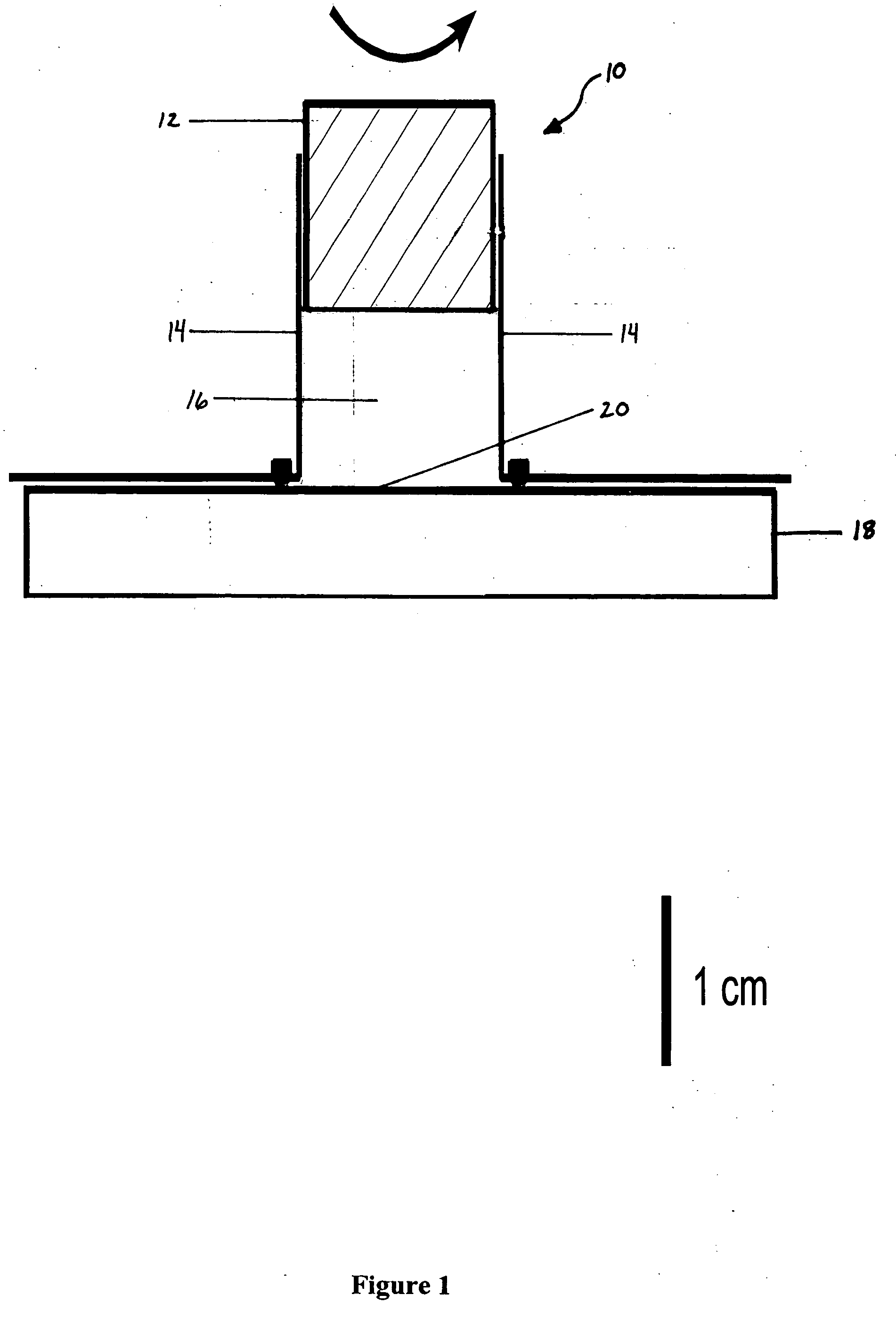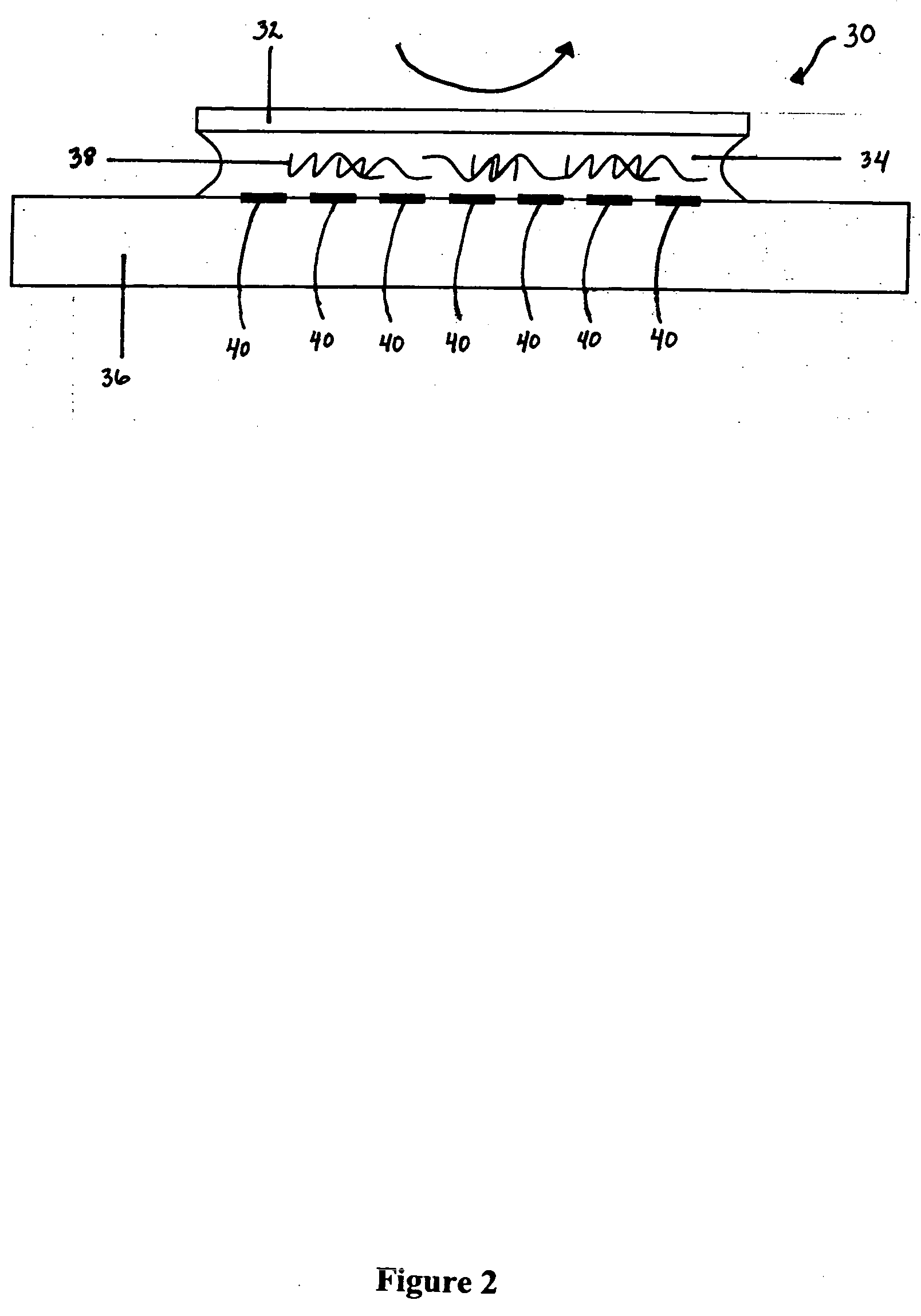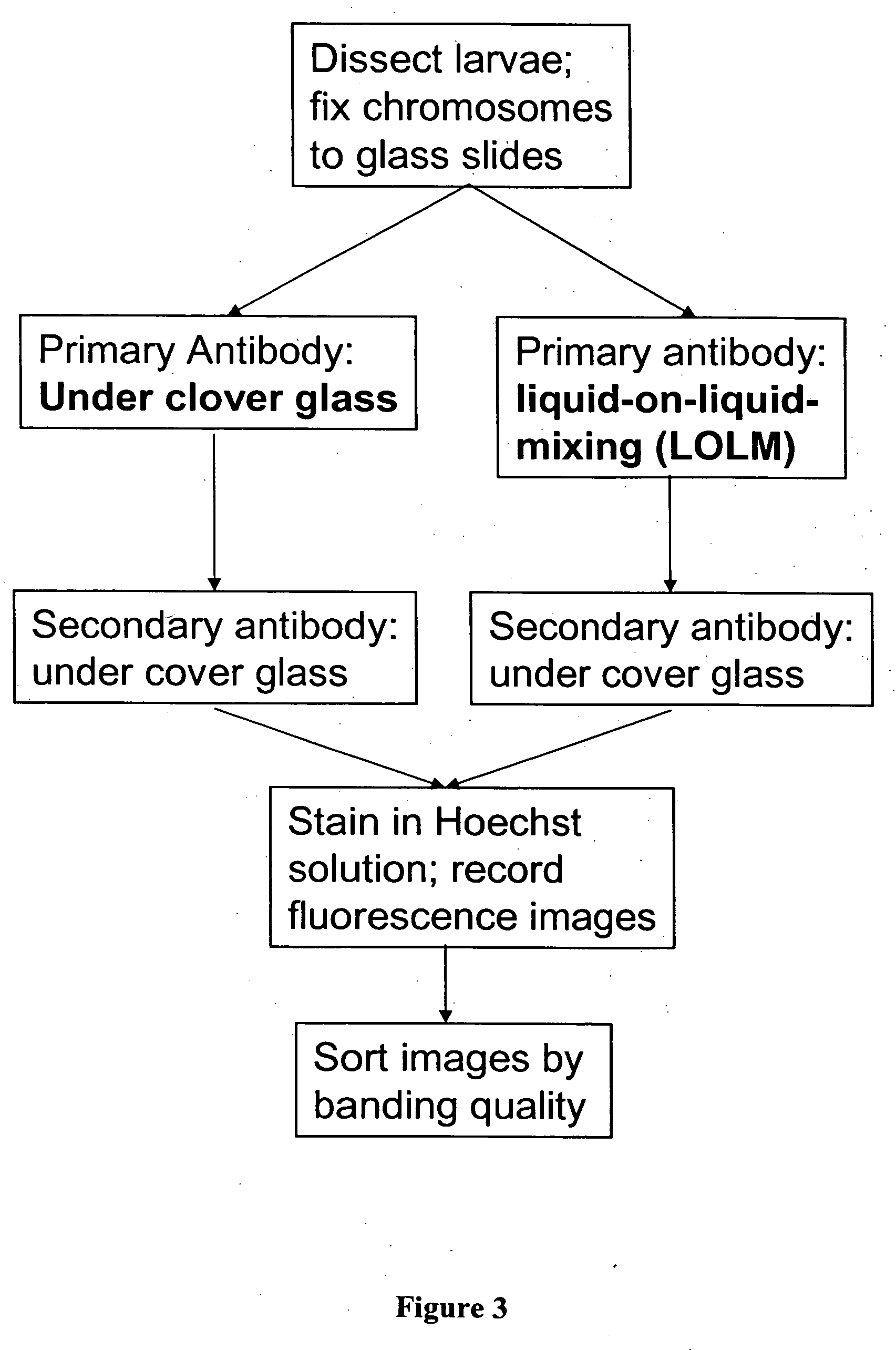Liquid mixing reactor for biochemical assays
a biochemical and liquid mixing technology, applied in the field of liquid mixing reactors for biochemical assays, can solve the problems of reactant diffuse, inability to achieve equilibrium, and inability to conduct assays for hours or days, so as to avoid potential dangers, avoid the effect of affecting the reaction rate and preserve the small reactant volum
- Summary
- Abstract
- Description
- Claims
- Application Information
AI Technical Summary
Benefits of technology
Problems solved by technology
Method used
Image
Examples
example 1
Absolute DNAM Efficiency Measurement
[0050] An absolute efficiency measurement of target detection efficiency was performed using DNAMs. Microarrays were constructed consisting of 20 spots each of two genes, Gly-3 and Rubisco, both about 1 kB in size. The target was Gly-3 diluted over four decades. The target was recognized as expected by the appropriate probe gene. The DNA detection efficiency was approximately 0.1% with an uncertainty of less than a factor of 10, completely consistent with the estimate based on bulk diffusion as the rate-limiting process.
example 2
Rotating Coverplate Hybridization System for Stirring Target Solution
[0051] In order to overcome this diffusion bottleneck, a pilot mixing experiment was assembled in which the target solution was stirred over the microarray by rotating a coverplate. It was found possible to magnetically suspend and rotate the coverplate by delicately balancing wetting, gravity, and magnetic suspension forces. In doing this, it is important to have a hydration protocol to keep the target solution from drying out as the coverplate was rotated. In order to assemble and remove the coverplate, a magnetic suspension system was developed for getting the microarray in and out for the hybridization chamber without unintentionally shearing the target solution. After many trials, success was obtained by rotating the coverplate for over an hour. As a result, for a microarray of 20 spots laid out along a line, a factor of two variations in hydrodynamic shear rate in a single hybridization experiment was attain...
example 3
Preliminary Results of Sheared Target Solution Hybridizations
[0053] An array of probes 20 spots of the 800 base fragments laid out along a line was used. The target was ssDNA of the same message, prepared by linear PCR. One-hour hybridizations were performed at 65° C. for two target concentrations: 1:15 and 1:1,500 dilutions of the purified linear PCR product. Stirring was carried out in the following manner: 90° rotations over roughly 10 sec. were manually executed every 5 minutes. In the unstirred control, ordinary (non-magnetic) coverslips were used.
[0054] Stirred and unstirred arrays were run in pairs at the same time in the thermostat. The result was as follows: 1) The 1:15 dilution yielded the same strong signal for a stirred and unstirred array; 2) The 1:1,500 dilution provided a clearly recognizable signal (the equivalent of a weakly expressed gene) when stirred and an undetectable signal when not stirred. This indicates that stirring at the lower concentration was very ef...
PUM
| Property | Measurement | Unit |
|---|---|---|
| volumes | aaaaa | aaaaa |
| temperature | aaaaa | aaaaa |
| diameter | aaaaa | aaaaa |
Abstract
Description
Claims
Application Information
 Login to View More
Login to View More - R&D
- Intellectual Property
- Life Sciences
- Materials
- Tech Scout
- Unparalleled Data Quality
- Higher Quality Content
- 60% Fewer Hallucinations
Browse by: Latest US Patents, China's latest patents, Technical Efficacy Thesaurus, Application Domain, Technology Topic, Popular Technical Reports.
© 2025 PatSnap. All rights reserved.Legal|Privacy policy|Modern Slavery Act Transparency Statement|Sitemap|About US| Contact US: help@patsnap.com



